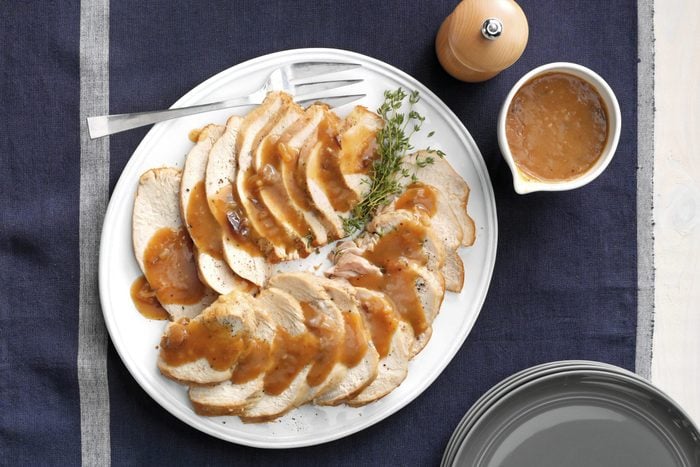
How to Fix Thick or Gloppy Gravy
The longer you simmer gravy, the thicker it will become, and it’s easy to end up with a thick, gloppy gravy. The fix here is super simple: whisk in a little more broth or water until it’s thinned to the desired consistency.
“Taste and adjust your seasonings so you don’t dilute them,” says Shannon Norris, Taste of Home senior food stylist. You don’t want a bland gravy!
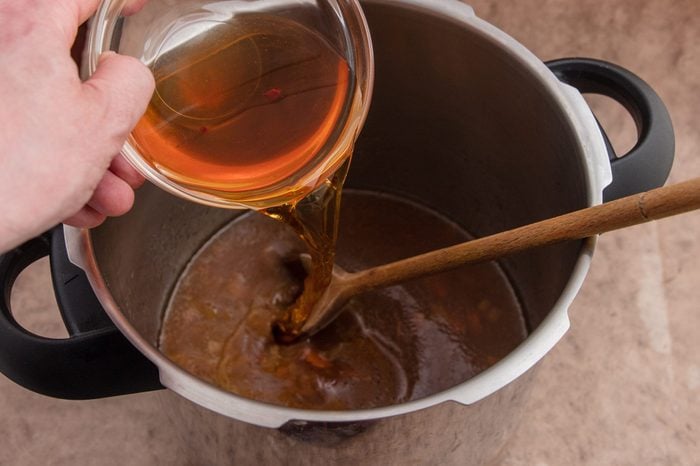
How to Fix Thin or Runny Gravy
Gravy is best when it has a medium body, so you don’t want it to be too thin or watery. If you have time, Shannon recommends thickening it up by making a roux for gravy ( one tablespoon of butter cooked with one tablespoon of flour) in a fresh pan. The roux can be whisked into the gravy until it reaches the desired thickness.
If you’re running short on time, “the easiest and fastest way is a cornstarch slurry,” she says.
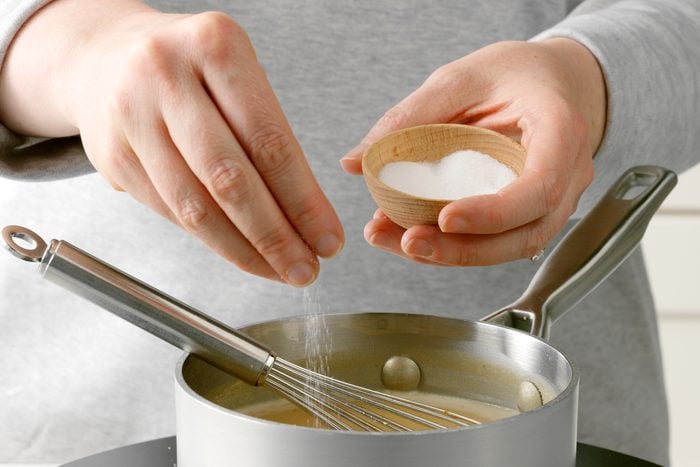
How to Fix Salty Gravy
It’s best to start with unsalted broth when making gravy and wait until the end to add salt. That said, mistakes happen! The simplest way to fix salty gravy is to add unsalted liquid, like water or unseasoned broth. Heavy cream works well here, too, if dairy is not a concern.
Of course, this may dilute your gravy a bit, so adjust the other seasonings like pepper and herbs. You may also need to add additional thickeners to reach the proper consistency.
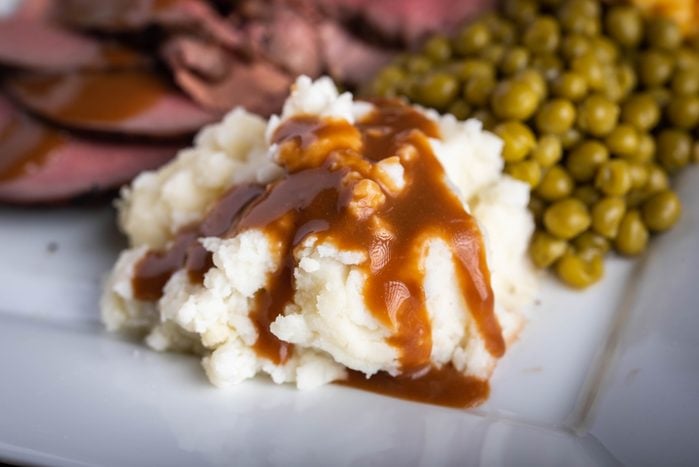
How to Fix Bland Gravy
Bland gravy: Is there anything sadder? Fortunately, Shannon has several suggestions for fixing bland gravy, starting by adding a bouillon cube, herbs or a splash of wine or cognac. But if you have time to spare, add pan drippings from turkey, bacon or bacon drippings, caramelized vegetables (like onions, leeks, carrots and celery), herbs or garlic.
You’ll want to simmer the gravy with these additions for a good 20 minutes to pick up the additional flavors (longer, if possible). You can strain any additions out using a fine mesh strainer before serving the gravy.
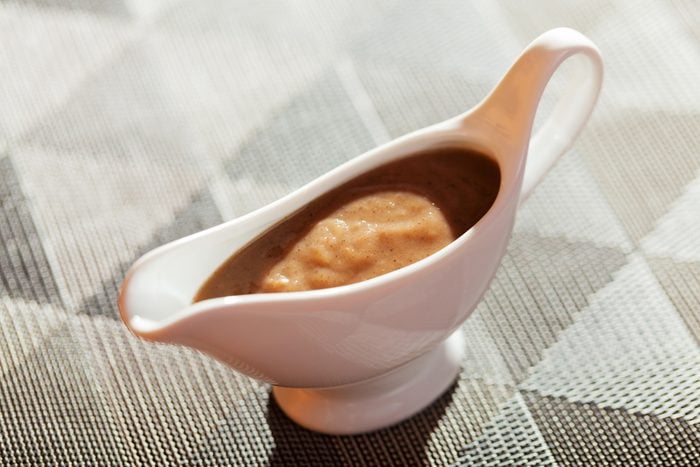
How to Fix Lumpy Gravy
It’s unfortunately easy to make lumpy gravy. Adding your thickener too quickly, or not whisking continuously as you add, can lead to dreaded lumps.
Shannon suggests using Wondra flour because it doesn’t clump as easily. If you do end up with lumps, strain them out with a fine-mesh strainer or pulse the gravy with an immersion blender to smooth things out.
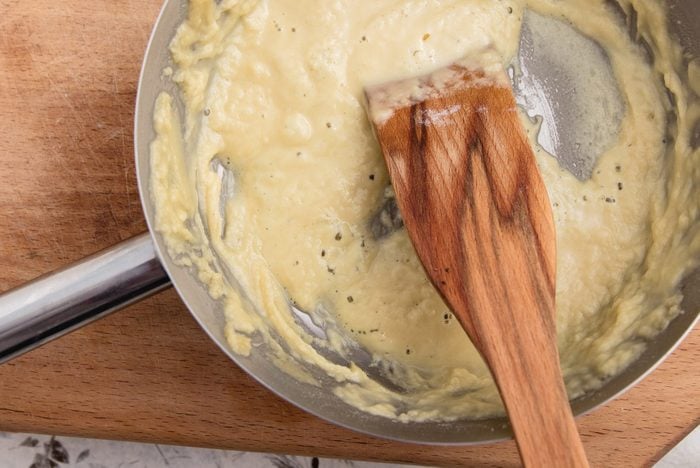
How to Fix Broken or Separated Gravy
A sauce will break if it’s heated too quickly or if it comes to a rapid boil after adding the thickener.
If your gravy is broken and not emulsified, Shannon suggests starting a roux of a tablespoon butter and a tablespoon flour in a fresh pan. Slowly add the broken gravy, a little at a time, until it’s all incorporated and smooth.
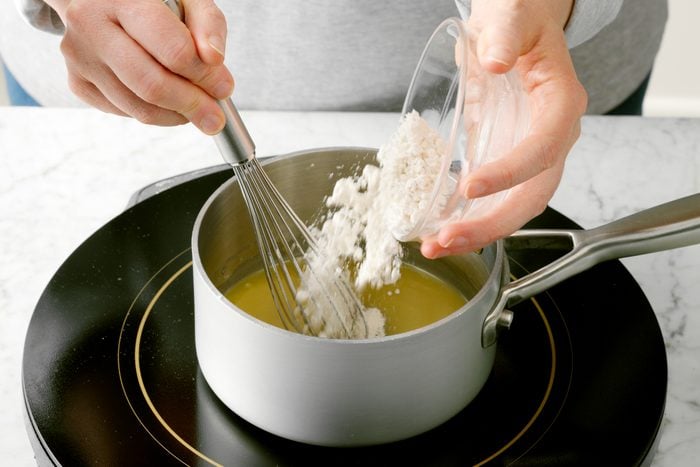
How to Fix Greasy Gravy
If your gravy is greasy, it likely had too much fat and not enough starch. Shannon suggests adding a cornstarch slurry to the gravy to fix it. The excess fat will bind with the cornstarch, reducing the grease factor. You may only need 1/2 teaspoon cornstarch mixed with 1 teaspoon water, or you may need as much as a tablespoon of cornstarch mixed into a few tablespoons of water, depending on how thick your gravy is.
If you add too much cornstarch, don’t fret; you can always thin the gravy using the method above.
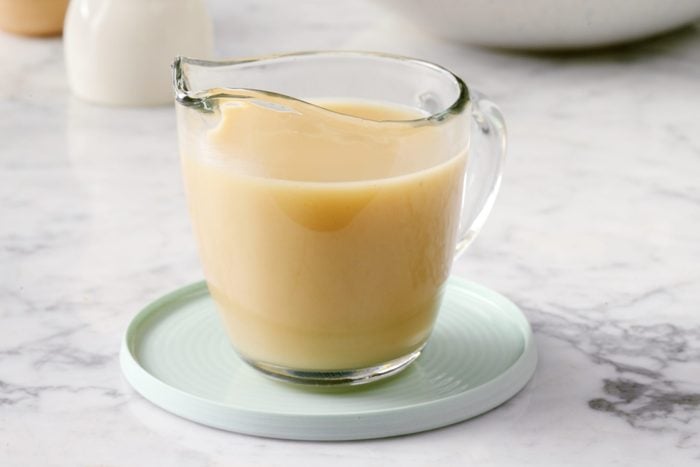
How to Fix Chalky-Tasting Gravy
Your gravy might taste doughy or chalky if you didn’t cook the flour enough when making your roux. You’ll want to cook the flour for at least five minutes, until it smells nutty and begins to turn light brown.
But if you don’t notice until it’s too late and you’ve already added your broth, bring the gravy to a simmer. Cook it, stirring constantly for a few minutes to try to cook out that chalky flavor. You may need to add additional liquid to bring it back to the correct consistency.
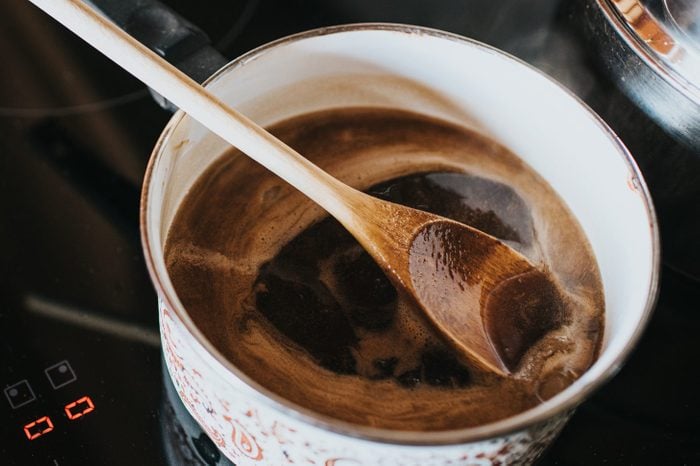
How to Fix Bitter Gravy
Gravy can turn bitter if you accidentally burn the flour in the roux, or if you added any burnt drippings to the mix. Fat and sweet flavors mask bitter flavors, so add a pinch of sugar, a splash of heavy cream or a pat of butter.
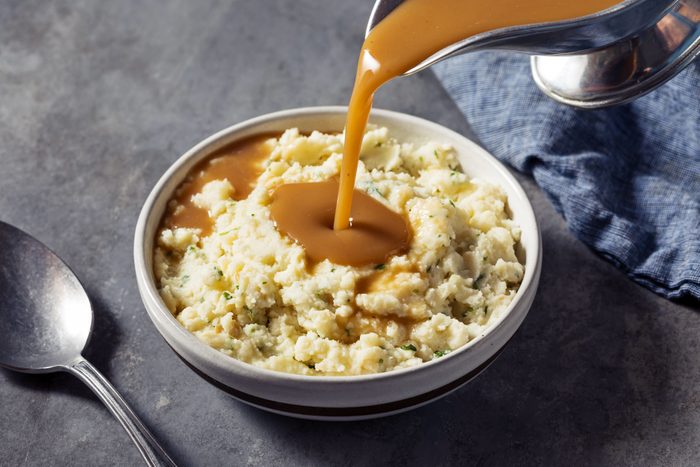
How to Fix Gravy That Lacks Depth
If your gravy tastes great but it lacks a little depth, add an umami flavor boost. Umami flavors are deeply savory and feel round on the palate. Spruce up the gravy with a splash of Worcestershire sauce or soy sauce (if the gravy isn’t already too salty, that is). Mushrooms or mushroom seasoning also work wonders to add rich flavor to depth-less gravy.
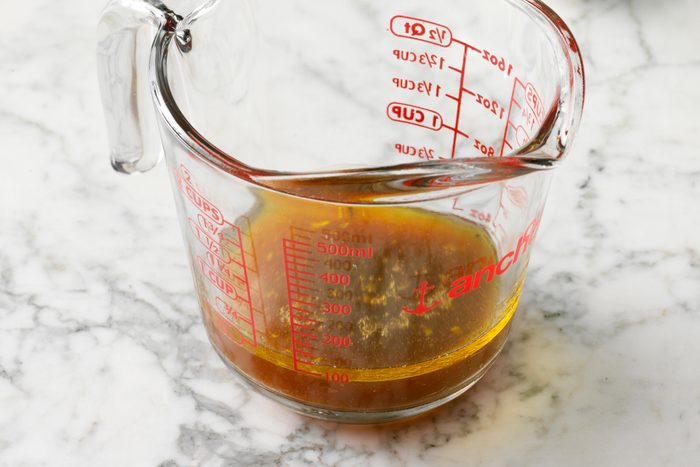
How to Fix Gravy without Pan Drippings
Pan drippings add a ton of flavor to gravy (like with this chicken gravy), but you can absolutely make gravy without them. If you have the time, try roasting a batch of chicken wings in the oven and simmer them in your broth instead of the turkey drippings. Shannon also suggests adding bacon or bacon drippings to your gravy. You can strain out the pieces before serving if desired.
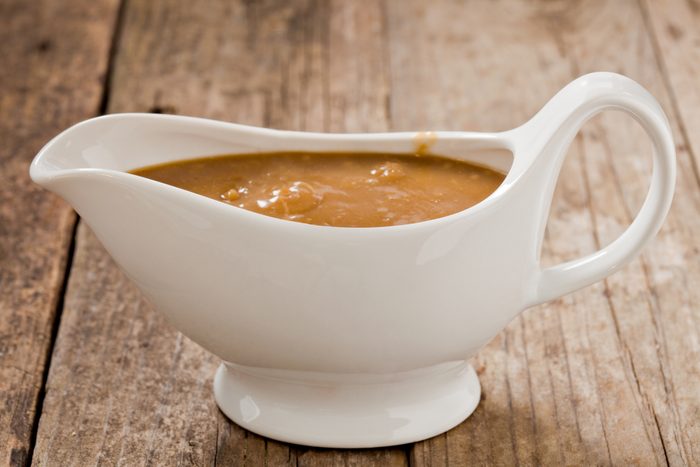
How to Fix Dull Gravy
If your gravy doesn’t have the right color, give it a boost with browning sauce. This sauce adds very little flavor to the gravy, but it’ll give it that deep color that makes traditional gravy shine. You can also add caramelized vegetables like onions, leeks, carrots or celery, although these will add flavor to the gravy.

How to Fix Gravy Without a Silky Mouthfeel
Shannon says the Test Kitchen’s best gravy is made with a roux. “The flour/fat combo gives you a silkier mouthfeel,” she says, compared to gravy made with cornstarch. Making roux is a bit messy compared to using cornstarch since you need to start in a fresh pan, but the end result is worth it. And if you’re running short on time, try make-ahead roux!
